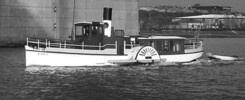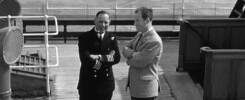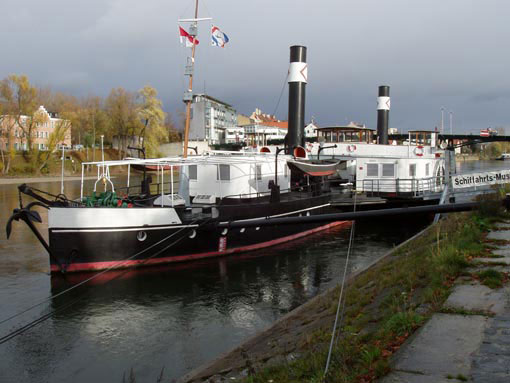
Tucked away in the delightful German town of Regensburg midway between Nuremberg and Munich is the wonderful paddle tug Ruthof / Ersekcsanad now open as a museum ship. Ruthof was built for service on the River Danube and was capable of towing several barges either alongside or astern. During the Second World War on 20th June 1944 she struck a mine and sank near Ersekcsanad with the loss of five lives. She remained under water for the following twelve years, was then raised, refurbished and finally returned to service under the new name of Ersekcsanad in 1957. She continued to operate until 1975 when she was withdrawn and laid up in Budapest. Four years later she was bought by her current owners, moved to Regensburg in 1980 and opened to the public three years after that.
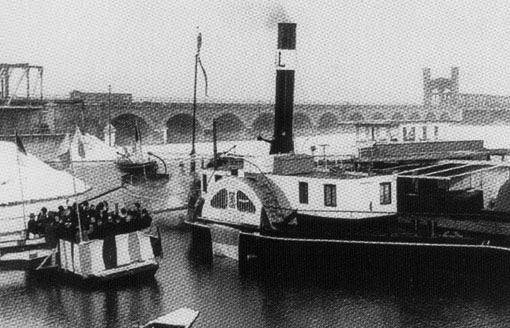
Two contrasting views of the Ruthof separated by eighty years. The first (above) was taken at her commissioning in 1923 when a number of distinguished guests gathered aboard a rather precarious looking barge for the ceremony.
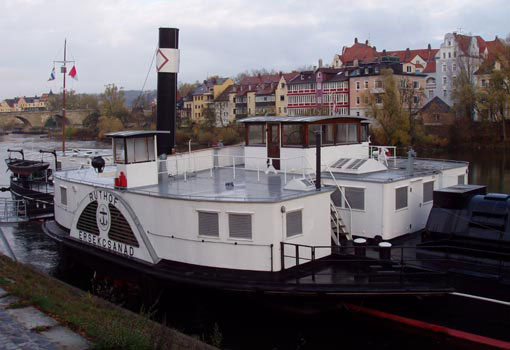
The second was taken in November 2004 at Regensburg. The cabin aft of the paddle wheel on the port sponson houses the galley, still with the original tiled deck and many fittings, and between this and the paddle wheel is a lead lined cool room used for storing perishables. The outside of this was kept cool by the wash of river water from the rotating paddle wheel.
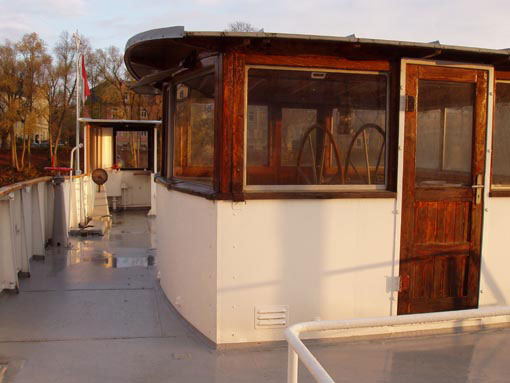
The bridge is large and has cabs on the wings of a sort once thought to be quite fashionable and much favoured by captains who had an aversion to getting wet when manoeuvring their ship in rain.
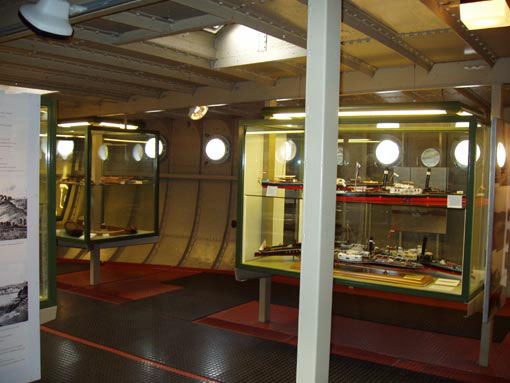
Below decks the crew accommodation forward and aft has been stripped out with the areas converted into museum spaces with a wonderful collection of models of Danube tugs and other vessels.
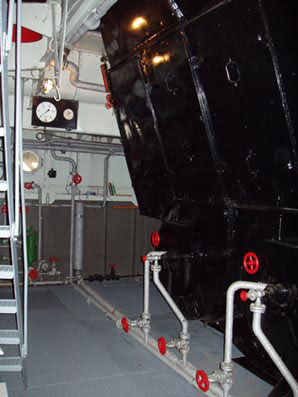
Ruthof has two boilers one forward and one aft of the machinery. Originally coal-fired these were subsequently converted to oil.
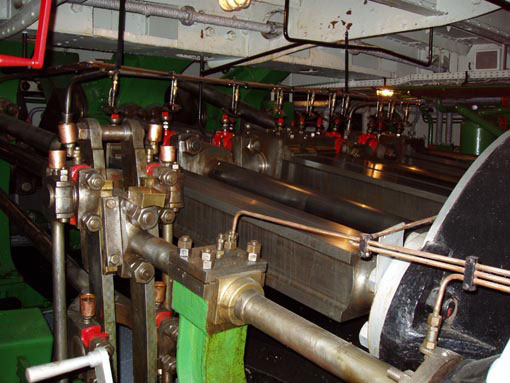
There is a huge compound reciprocating steam engine which looks as though it is just waiting for the steam to be raised.
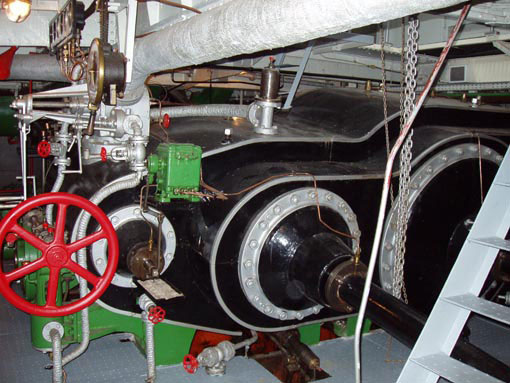
The manoeuvring position is on the lower deck in a similar position to that on Kingswear Castle and, as you can see, the pistons have tail rods which lead out of the rear end of the cylinders. These have the advantage of giving the pistons better support and reduce the barrelling effect which the piston’s weight sliding up and down otherwise causes on the bottoms of the cylinders of a diagonal engine.
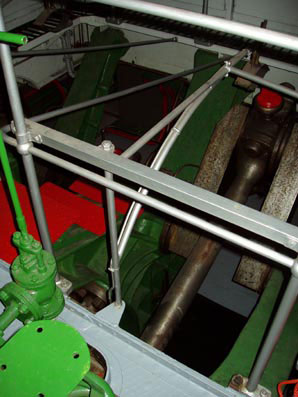
Looking down on the engine.
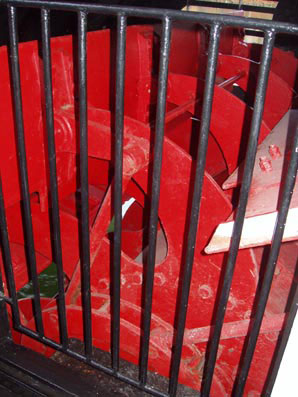
Given the shallow draft of the Ruthof the paddle wheels are of modest diameter and, rather like the Dresden paddlers, look a bit lost inside the much larger paddle boxes. The feathering mechanism, which can be seen in the foreground, is on the inboard side of the wheels.
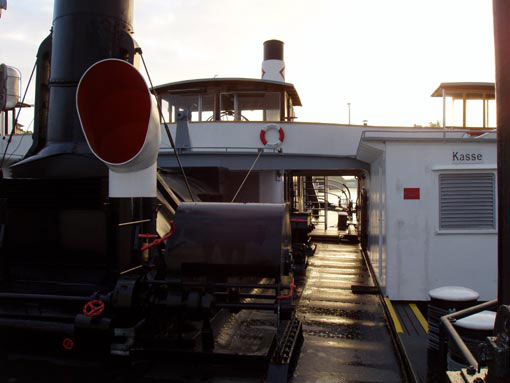
A view looking aft along the deck with one of the the winches used for the towing wires in the foreground and a set of gigantic towing bits on the right.
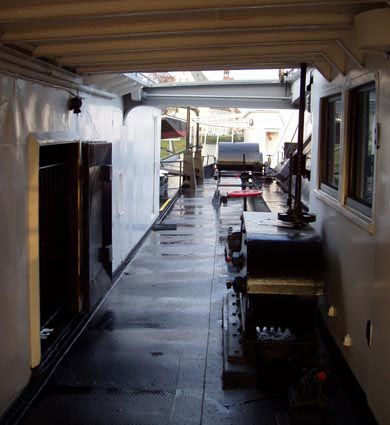
Looking forward from the midships accommodation on the port side. The door to the paddle wheel is open on the left and one of the towing wire winches is in the distance forward. The extension spindle for connecting the mechanism to the bridge for the captain’s use can be seen on the right.
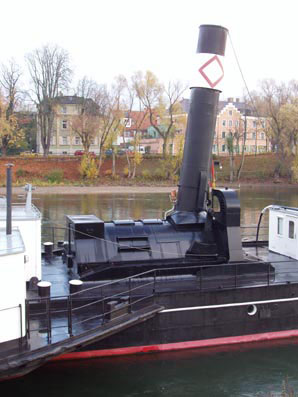
Both funnels are counterbalanced with weights and can be hauled down by turning the hand operated winch which can be seen at the aft end of the bridge connected to the funnel weight by wire.
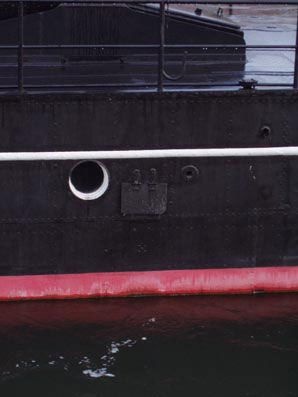
Also just to the right of the porthole you can see a little flap in the hull. This was used for ejecting ash straight from the end of the stoker’s shovel out of the stokehold and overboard into the river.
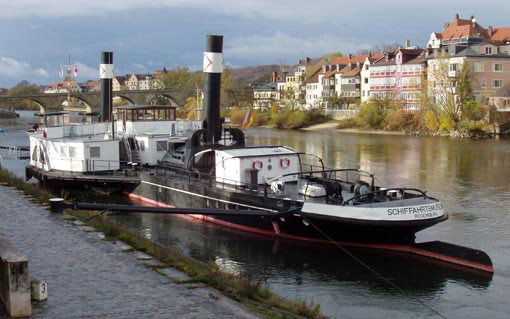
The Regensburg Maritime Museum also owns a second and occasionally operational Danube tug, the propeller driven, Diesel powered Freudenau. She makes forays up and down the Danube from time to time and last summer visited Budapest. Regensburg itself is a charming town with its quaint old quarter and cathedral and the Ruthof / Ersekcsanad (pictured above) is just stunning. Beautifully maintained in excellent condition by a largely volunteer labour force she is a real gem amongst European preserved paddle steamers. There is a feeling of size and weight and purposefulness about her and a visit is much to be recommended. The two tugs are open every day from April to October and by arrangement in the winter.
For more information have a look at their website here.
Kingswear Castle returned to service in 2023 after the first part of a major rebuild which is designed to set her up for the next 25 years running on the River Dart. The Paddle Steamer Kingswear Castle Trust is now fund raising for the second phase of the rebuild. You can read more about the rebuilds and how you can help if you can here.
John Megoran

